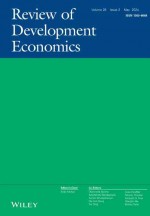Tim Palmer, Peter Düben and Hugh McNamara
Phil. Trans. R. Soc. A. 2014 372 20140118; doi:10.1098/rsta.2014.0118 (published 19 May 2014)
View Journal Article / Working PaperBeing able to predict weather and climate reliably over a range of time scale is crucial if we are to create a society which is resilient to extremes of weather and climate. Although current weather and climate models can show impressive levels of predictive skill, for example in predicting the track of a tropical cyclone over the coming days or the development of El Niño sea surface temperature anomalies over the coming months, the performance of these models is degraded by the development of systematic departures, or biases, between simulated fields and observed fields. The development of these model deficiencies is not associated with a lack of knowledge or understanding of the laws which govern the evolution of weather and climate. Rather, these deficiencies arise because we are not able to solve the associated nonlinear multi-scale evolution equations with sufficient accuracy.




